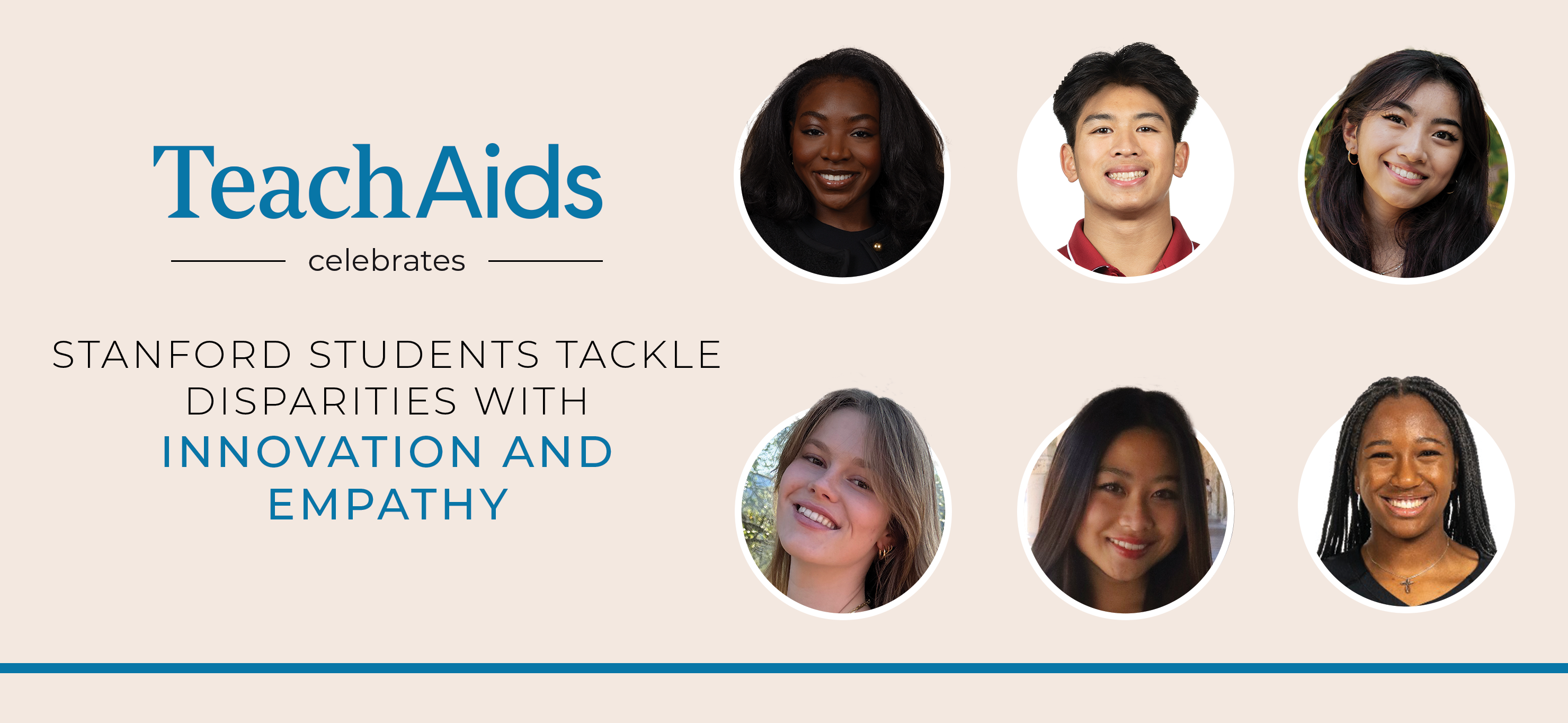
|
Integrating Health and Education: Stanford Students Tackle Disparities with Innovation and Empathy
Each year at Stanford, students from diverse academic backgrounds unite around a shared passion: ensuring that every child has an equal opportunity to thrive, both in the classroom and in life. The course “Reducing Health Disparities and Closing the Achievement Gap Through Health Integration in Schools,” co-taught by Dr. Piya Sorcar, Dr. Ryan Padrez and Dr. Eunice Rodriguez, explores the powerful link between health and academic performance, and the urgent need to address preventable health barriers facing children, particularly those from medically underserved communities.
“If kids aren’t healthy, they won’t realize their full potential in school,” said Dr. Sorcar, Founder and CEO of TeachAids and Adjunct Professor at the Stanford School of Medicine “This class challenges students to think deeply about how educational equity is inextricably linked with health equity.”
The course is jointly housed in Stanford’s Department of Pediatrics and the Program in Human Biology. Students examine key health issues impacting learning including asthma, HIV, vision and hearing loss, dental problems, mental and behavioral health challenges, toxic stress, concussions, obesity, food insecurity, and environmental toxins. Through case studies and discussion, they also explore successful school-based health initiatives and develop their own policy recommendations.
“The TeachAids model offers a powerful lens into how the K-12 education system can be a vehicle for health equity,” said Lisiane Nemlin, a senior majoring in Human Biology with a concentration in public policy. “At such a formative point in a child’s life, schools can become critical spaces where parents, educators, and health professionals collaborate to address the social determinants of health. What makes this class stand out is how it bridges theory with action, encouraging us to draw from our lived experiences as students and to think creatively about solutions that can drive change in our own communities.”
Brandon Nguyen, a pre-med student majoring in Human Biology with a concentration in physiology and public health, shared, “This class has deeply shifted the way I think about public health, particularly the importance of truly listening to the community. As I look back on what I’ve learned, I find it both comforting and inspiring to realize how many meaningful ways there are to make a difference in our communities. I know that the insights and experiences from this course will guide me in whatever endeavors I choose to pursue.”
Charity McDowell, a Community Health and Prevention Research masters student, further emphasized the impact this class has made on her network, passion and future actions. “I have always had a strong passion for education and health, but never had a class that merged the two worlds. I am grateful to have had the space to focus on this topic. The class allowed me to learn from and engage with professionals actively working in both worlds and interact with classmates to brainstorm solutions. It is exciting to think of the future ideas and innovations that will come out of it. I’m sure there will be many.”
“The TeachAids approach exemplifies how health education can be scientifically rigorous while simultaneously engaging and resonating with the communities it’s designed for”, said Aileen Lê, a junior majoring in Human Biology and minoring in Poverty, Inequality, and Policy. “I walked away empowered, with a more vivid understanding of the effectiveness of health outreach when it is rooted in intentionality, cultural responsiveness, humility, and a healthy dose of scrappiness. From TeachAids, we learn to embrace the discomfort and flexibility invaluable to actively centering community needs and values—both in health and beyond.”
Another student, Angeline Yu, a masters student in Community Health and Prevention Research, focused her final class assignment on strategies to address fentanyl overdose in adolescents, a topic that hits close to home for her. She reflected, “I referenced TeachAids materials in my policy recommendations as a leading example of how to center resonance and relevance to an audience in a way that honors their context, empowers informed decision-making, and fosters a sense of agency. No matter how well-researched the information may be, it only resonates well when we listen to the communities that we aim to serve. When their voices matter to us, our educational efforts will matter to them. TeachAids represents a powerful tool that can represent the future of effective education and inspire healthier, more engaged futures.”
Throughout the course, students analyzed real-world programs, designed intervention strategies, and reflected on the systemic nature of health disparities. The final project, a policy brief based on their own area of interest, enabled each student to apply course concepts to issues ranging from childhood obesity and ADHD to environmental toxins in low-income neighborhoods.
As the class wrapped up, students expressed a renewed commitment to advancing equity.
“As an EMT in San Francisco, homelessness in San Francisco has felt like an impossible problem to solve. But, after hearing from Dr. Sorcar about how TeachAids has created a process to provide research-based education in a systematic way and on such a large scale, I feel hopeful that no problem is unsolvable.” says Sophia Artandi, a pre-med junior majoring in Human Biology and English Literature.